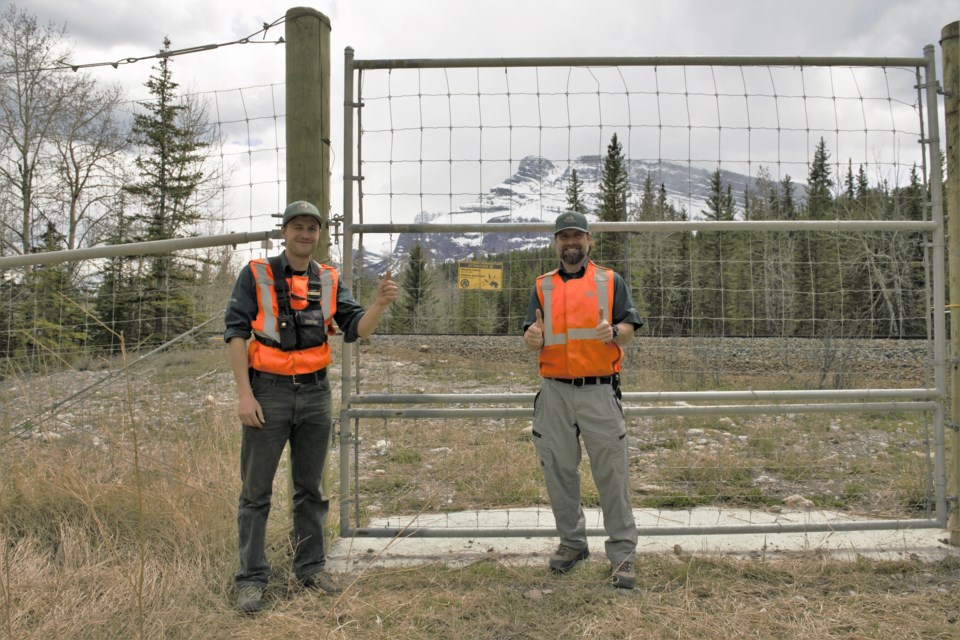BANFF – Parks Canada has added more electrified fencing to prevent bears from getting onto the deadly Trans-Canada Highway in Banff National Park.
An electric wire was added to about nine kilolmetres of wildlife exclusion fencing at two bear mortality hotspots west of Banff over winter, adding to the five-km stretch of electrified fencing installed east of the townsite in winter 2019-20.
Dan Rafla, a human-wildlife management specialist with Banff National Park, said the wire delivers a non-lethal electric shot to dissuade bears from trying to climb the fence.
“We’ve done more work west of town and we are probably days away from flicking the switch,” he said.
As bears try to climb the fence, a solar-powered system sends out roughly 6,000-9,000 volts from the single electric wire, which is located about four feet off the ground on the eight-foot page wire fence.
The latest fence locations to be fitted with an electric wire include a stretch from the Sunshine interchange to Bourgeau day-use area and another one near Redearth Creek day-use area – about nine kilometres in total.
Both of these areas are next to wildlife crossing structures.
“It’s not surprising animals are making movements in these corridors and that’s where we tend to see bears, particularly black bears, climbing over the fence,” Rafla said.
“The idea is the bears are coming out, they get zapped, so they avoid it and look for an area in which to cross – and then they hit those crossing structures and they learn to use those areas more effectively.”
The black bear death toll on the roads and train tracks in Banff National Park varies every year, but last year there were several deaths. A black bear was hit by a train on the CP Railway line last Friday (May 7) east of Hillsdale.
The population status for black bears in Banff National Park has never been quantitatively examined, but some scientists have suggested the Bow Valley may be a population sink for black bears.
Parks Canada has GPS collars fitted on five black bears in the area, including a male black bear that was hit by a vehicle on the highway east of Banff in summer 2019 – and survived.
At that time, the young black bear was immobilized and assessed for injuries, which revealed he had a broken chip on his shoulder as a result of the collision.
“Bears are incredibly resilient and tough, and we decided, with our wildlife health specialist, this bear has a fighting chance,” Rafla said, adding a collar was put on the bear to follow its movements.
Now two years later, the bear has healed and actively travels throughout the area.
“It’s really great for us to see the outcome when we make a decision to give that animal the benefit of the doubt,” Rafla said.
“You actually have cases where these animals do heal and they don’t get into trouble and they are able to survive.”
Collaring some of the black bears that include this region in their home range has helped Parks Canada get a better idea of where the animals are travelling for this electric fencing project.
“It allows us to see how they are crossing the highway. Are they avoiding the electrified portions? Are they then using wildlife crossing structures?” Rafla said.
“This enables us to ground truth, to tell us how they’re using the landscape, especially landscapes closer to town or human-use areas.”
The fences are checked regularly, with indicator lights flashing when there is low to no voltage.
Parks Canada urges residents and visitors to report any wildlife on the highway to Banff dispatch at 403-762-1470.
Read more from RMOToday.com



